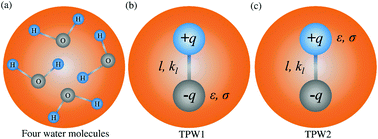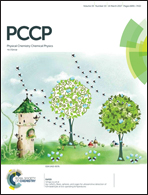Two-bead polarizable water models combined with a two-bead multipole force field (TMFF) for coarse-grained simulation of proteins
Abstract
The development of polarizable water models at coarse-grained (CG) levels is of much importance to CG molecular dynamics simulations of large biomolecular systems. In this work, we combined the newly developed two-bead multipole force field (TMFF) for proteins with the two-bead polarizable water models to carry out CG molecular dynamics simulations for benchmark proteins. In our simulations, two different two-bead polarizable water models are employed, the RTPW model representing five water molecules by Riniker et al. and the LTPW model representing four water molecules. The LTPW model is developed in this study based on the Martini three-bead polarizable water model. Our simulation results showed that the combination of TMFF with the LTPW model significantly stabilizes the protein's native structure in CG simulations, while the use of the RTPW model gives better agreement with all-atom simulations in predicting the residue-level fluctuation dynamics. Overall, the TMFF coupled with the two-bead polarizable water models enables one to perform an efficient and reliable CG dynamics study of the structural and functional properties of large biomolecules.



 Please wait while we load your content...
Please wait while we load your content...